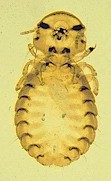ChristieC
Hatching
- Oct 28, 2015
- 1
- 0
- 7
What is the best remedy...We have about 25 other chickens as well...We first saw them on the butts of the hens HELP
Follow along with the video below to see how to install our site as a web app on your home screen.
Note: This feature may not be available in some browsers.

@ChristieC , welcome to BYC!What is the best remedy...We have about 25 other chickens as well...We first saw them on the butts of the hens HELP